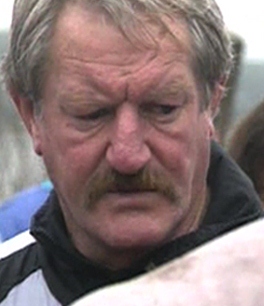New Zealand’s RWC Angst Explained: Part 1
3The New Zealand fascination with winning the 2011 Rugby World Cup intrigues those who haven’t lived through the post 1987 era. What are those Steinlager ads about, why is a 1987 veteran wheeled out on every sports show, what on earth are Telecom thinking with a rubber ring promotion, and why is the Prime Minister always talking about the outcome? You can even get t-shirts exploring the hang-ups.
In Part One of Five, let’s go back and look at what has happened since 1987, and how the legend of national disappointment has grown into the monster it is in 2011.
1991: The Team of Two Halves
Build-up:
The All Blacks were literally unbeatable for over three years following the first Rugby World Cup. They were based around the Cup winning side of 1987, which was young at the time, and the dominant Auckland side of the era.
But they were coached by Grizz Wylie; as red and black as you could get. Rumours grew over the years that this was becoming a divided side. And, at the end of 1990, the All Blacks lost to the Wallabies; proof that dead rubbers can sometimes be very important.
The NZRU started to worry a bit and then Chairman Eddie Tonks had the brain wave that John Hart, who had been chipping away since 1987 via the mouth of Andy Haden, was appointed as assistant coach. Which is a bit like co-opting in Sarah Palin to help Obama get through some debt ceiling legislation.
Factionalism then took over team selection. For Canterbury’s Andy Earl there was Auckland’s Mark Carter. For Auckland’s Bernie MacCahill there was Canterbury’s Shayne Philpott. Selections that polarised the nation and, allegedly, the team.
Toe-curling associated promotional campaign:
Not this time.
The Easy Stuff:
A slightly skewed draw meant that NZ played England in the same group in the opening match. At least one of those sides was to make the final.
New Zealand won the match 15-9; Michael Jones scored the opening try. He’d done that in 1987 too, so clearly there was an omen.
Then the signs started to emerge. A patchy 31-21 victory over Italy was followed by an even more unconvincing 29-13 quarter-final victory over powerhouse Canada.
The Exit:
The All Blacks got to Dublin for their semi-final against the Wallabies and immediately pulled down the shutters. No interviews, no promo events, no friends. Australia, who had been there for their quarter-final match did the interviews, visited the schools, smiled a lot, and when the match started the crowd was firmly cheering for them.
The first half produced some of the best rugby seen at a World Cup. This was one of the great Australian backlines; the experience of Farr-Jones, Lynagh and Campese being complimented by the new midfield combination of Horan and Little.
And they pretty much ran the All Blacks round Landsdowne Road for 40 minutes scoring two memorable tries. The All Blacks did try to fight back later in the match, but it was too little, too late by then.
Australia won the match 16-6 and went on the beat England in the final.
The Aftermath:
A couple of Whetton twins, Innes, Crowley, and South Island favourite Bernie McCahill never played for the All Blacks again.
Laurie Mains took over the All Blacks and John Hart went home to think about ways not to perform a coup, and to plan his next one more carefully.
Next: The Best Team Never to win the World Cup

